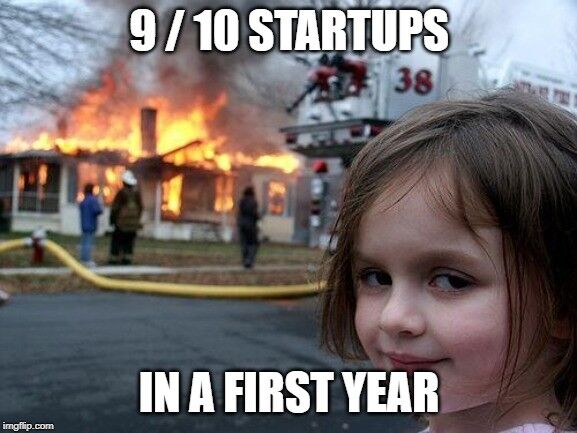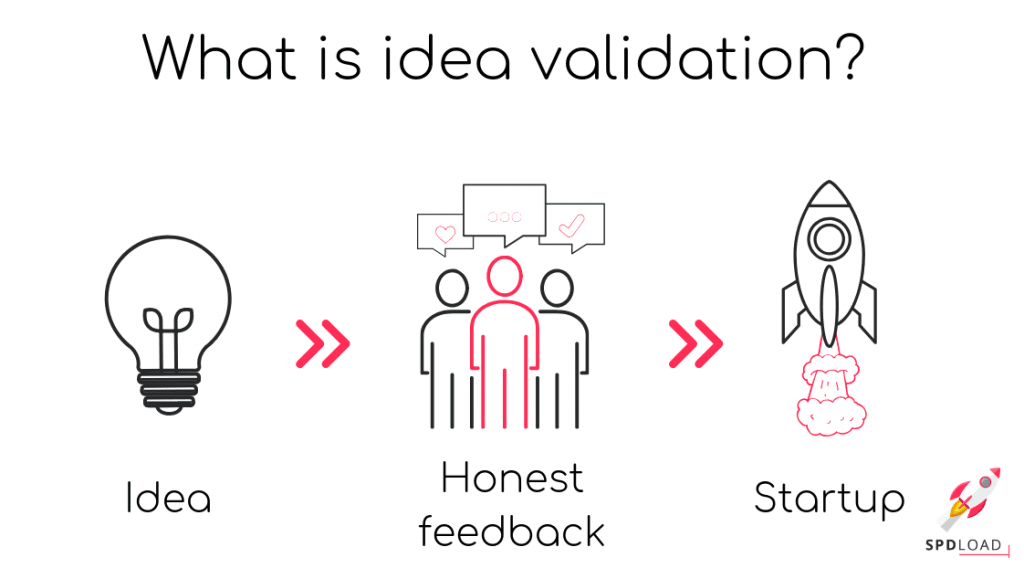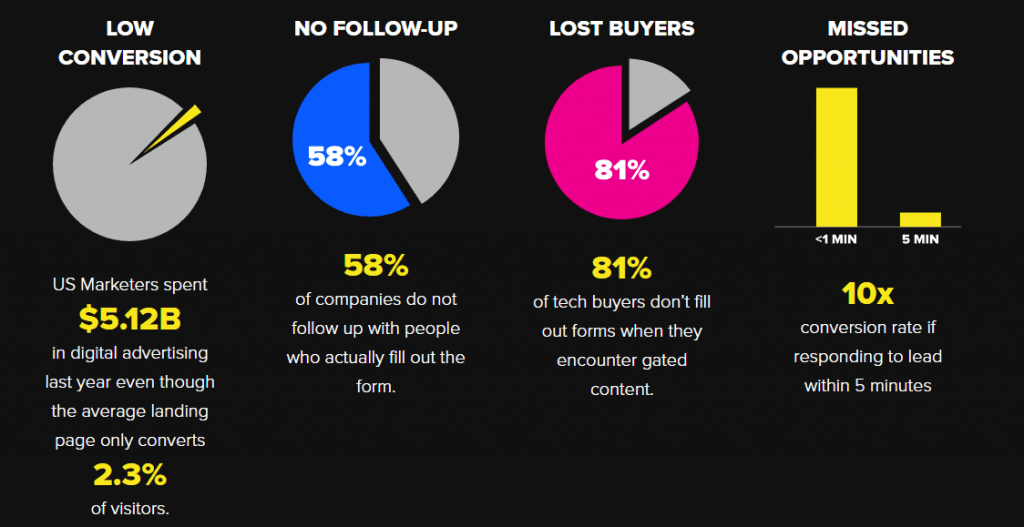What is Idea Validation and How to Validate Your Ideas in a Right Way?
- Updated: Nov 07, 2024
- 12 min
Are you a first-time startup founder ready to shake things up? I won’t sugarcoat it – it can be challenging.
80% of business ideas fail within the first year.
But that’s the nature of the game – only the strongest minimum viable products survive. Your goal should be to beat the odds and be part of the successful 20%.
The good news? I have a secret weapon to help you summit this entrepreneurial Mount Everest: idea validation. Let me explain why it’s so critical. 
The harsh truth is that 9 out of 10 startups fail because the market doesn’t need what they sell.
As a founder, you should pursue your vision. But as a business owner, you need a laser focus on building products people actually want to buy.
Validating your idea upfront helps determine if your vision aligns with real-world market demand. And trust me, this validation matters if you want to avoid failure.
But what exactly is involved in idea validation? And how do you do it right? Let’s dive in!
Do a discovery research to validate a product-market fit with our marketing experts — contact us today to get started!
What is Idea Validation?
Idea validation is the process of testing business ideas to understand their viability. It helps to prove the market need and target audience’s willingness to pay.
Those founders, who prefer to skip the process and don’t clarify if their potential customers want to buy a product, fail too fast. No connection with real people makes your startup a money pit with no possibility for both successful sales or marketing.
Testing an idea can be anything from communicating with potential customers to specific landing pages on the Internet.
Product validation lets you understand the market situation keeping from starting meaningless and needless development. 
Mailchimp is one of the most recognizable brands today. This company also began its journey with idea validation. Once being just a side-project, now Mailchimp has $600 million in revenue.
Its founders were building an e-meeting website, but this side-project failed. Yet, customers asked them to help with email marketing instead.
That particular product idea didn’t find a proper market niche. Instead, it helped to validate the customers’ willingness to pay for another product. That is how idea validation works.
Why Validate Your Idea
The validation of your business idea has two main reasons to be done.
The first is about market validation. Your idea might be the business achievement of the decade. But without a market need, the idea is worth nothing.
The second one is about risk mitigation. Testing your startup idea is a cheap and confident way to ascertain there are early adopters. And to make sure they are ready to spend money on your product.
Many founders fall into the same trap. They misunderstand the significance of the problem they want to solve.
The market loves ambition but not a delusion. Make sure you stop wasting your resources and start producing products with real-world value.
How to Validate an Idea (Idea Validation Framework)
Write down a product concept. Before starting a testing process, you have to clarify what do you want to see as the final product. Here is what you need to do:
- Define a problem. The founders often face difficulties in business development because the world doesn’t need their product. Avoid this. Identify a pool of relevant problems, visible and not, that you can solve more efficiently.
- Define a customer. You cannot cover the entire market from the very beginning. But you can gradually scale if the product does well. Where does your client work? What is the size of his or her company? Which industry? And so on.
- Define an innovation. Do you solve the old problem in a new way? Or a new problem in the old way? Focus on the value you offer, but not the existing market players for now.
Set validation goals. You need evidence that your idea is viable in the real world. Thus, set measurable and clear objectives:
- approval of your idea from 10 potential customers
- 5 successful pitches in the companies
- 1 successful sale of a product concept and so on
Formulate hypotheses. Your idea is a set of business hypotheses. A clear definition will give you a straightforward answer on whether the hypothesis is viable or not.
- Drivers would rather use a mobile app instead of a phone service.
- Teenagers would like to make short videos for their favorite songs.
- Students will share their thoughts in a short format of 140 characters.
Develop a value proposition. What benefits can a user get from using your product in contrast to existing solutions? It could be literally anything. Make sure you can convey it in a simple form to the customer you expect to receive feedback from.
Validate. You can survey customers, create prototypes, or build an MVP. Choose one of the 13 validation types, test hypotheses, and unique value proposition.
Processing with feedback. As a result of validation, you should get customers’ feedback on the key points. The task at this stage is to interpret the results correctly. What do users consider to be worth their attention? What will work? Why does it work?
Decide. As soon as you finish with the idea validation, it is time to make a decision. You can continue developing a specific startup idea (learn more in our I have an app idea article). Or you can make a pivot — change the concept of the product. The only rule here is always to move forward to give the real value.
Abdo Riani, Forbes contributor and tech entrepreneur, notices:
Idea or hypothesis validation can be divided into qualitative and quantitative tests. In a startup, the most common qualitative validation test is through customer interviews.
Through one-on-one interviews you want to see if those interviewees deliberately indicate a need for a solution.
As a validation benchmark, if 60% or more of your interviewees ask for a solution, you have sufficient proof to move forward.
This benchmark can be as little as 40% depending on variables like competition and urgency of the need. The bigger the percentage the better.
At the end of the day, your goal is to make sure you are building a product people need and will pay for.
Through qualitative and quantitative validation tests, you want to answer three questions:
- What is the problem?
- What is the solution?
- Who needs my solution the most (your target)?
A good example of a clear product concept is Drift. It has more than 100,000 customers in 3 years. A good indicator. What is the reason for success? As Drift’s founder said, the team created the product concept and validated it from day one.
Just look at how clearly they indicated the problems. 
Effective Ways to Validate Your Idea
Idea validation is a significant part of the Customer Development framework. It was developed by a godfather of Silicon Valley, Steve Blank.
Along with validating an idea, a wanna-be-successful founder also needs to validate the buyer and the market. There are 3 ways to do so. Use Proof of Concept, prototyping or MVP.
There are 13 approaches to test the startup idea. They will help you find the best evidence of the viability of your product.
Explore our app development services today
Proof of Concept
- Internet Research. Many founders have an abiding faith in the uniqueness of their business idea. They do not use Google or Crunchbase to make sure. But they should. Since it’s the easiest way to find both direct competitors and target audience’s habitat.
- Scrape forums. Check the industry platforms, resources, and relevant topics. You may find both indirect proofs of a business problem and contacts of relevant leads. Reddit is a good start point.
- Interview customers. It isn’t an elevator pitch to customers. It’s about collecting objective feedback. Ask about the relevancy of a problem, quality of concept, strong and weak points. You can use Quora or LinkedIn to reach the target audience. A good option here is to prepare a survey using TypeForm.
- Create a blog. Does it sound time-consuming? Partly it is. It is not the fastest way, but a reliable option to repeatedly validate new and new hypotheses. You have a two-way communication tool, so use it to the fullest. You can start with Medium or Blogger.
- Create a landing page. Any landing is a complex solution. It enables you to collect feedback on the value proposition and particular features. You can even find the first customers without a single line of code. Use site-builders like Wix or Weebly.
- Start an ad campaign. You can use Facebook Ads or Google Ads to reach your audience. Customize demographic and location. Use split campaigns to discover what customers like about your product — down to single features. For advertisers looking to maximize exposure, our CPM calculator helps manage costs while reaching more people.
Prototyping
- Use a pen and paper. It’s an easy and the most flexible way to let potential customers try what you aim to create. Draw an interface and a few screens. Let the user try the workflow. You can modify the results anytime according to the customers’ feedback.
- Create wireframes. Digital prototypes are an effective way to create the user experience in the most precise details. Use it to avoid significant issues before development starts. I’d recommend trying Balsamiq for prototyping.
- Make an explanatory video. Use video to explain how your product will work. Describe all benefits and useful features as Dropbox founder did. It’s both a simple and effective way to reach the audience and collect feedback.
Minimum Viable Product
- The Concierge. It is an MVP where you personally help the customer to solve a problem. A human replaces automatic components of the system. The most famous case of this type is Food on the Table. But why do you need to act so?
- It gives you a close touchpoint with early customers.
- It lets you better understand the required workflow.
- It’s free! (but don’t forget that it is time-consuming)
- The Wizard of Oz. Impress your customers without building any product. What do I mean? Aardvark is a Q&A service that, being at an MVP stage, gave manual answers to all questions without any automation.
- At an early stage, it’s cheaper to pay people than to code a service.
- It gives more useful insights about scaling possibilities of a full product.
- The Piecemeal. It’s like a combination of the first and second types. In this case, there are two unconnected software products. You can use other existing apps to deliver your service as a final product to the customer.
- The single-feature. This type of MVP works great for product validation. There are no additional features, except the core ones. It gives a clear picture of how the customer would interact with a full version of the product.
- It’s still a cheap solution.
- It gives the real picture of the product-market fit. You can use product analytics software to make sure it works well for your customers.
Outcomes of Idea Validation
As soon as you validate the first set of hypotheses, you’ll have 4 options on how to continue the project. Let’s consider them:
- Develop or Continue MVP Development. Minimum Viable Product is a must-have for agile and fastest-to-market movement for any startup. Yet, it’s a more advanced way to continue testing the business hypotheses in conditions of the real-life market.
- Close the first sale. It’s a dream-like scenario. But if you could sell your concept at the idea validation stage, you wouldn’t find the best evidence of the market need.
- Cancel inviable product idea. It’s hard to abandon the idea you dreamed about. But it is better to think about it as a valuable experience that you were unlikely to gain otherwise. So if your hypotheses failed, it’s useful anyway.
- Do a pivot. t’s about changing your approach to build a product without changing your vision. Discard hypotheses that failed the test. Offer the new ones, but for new business conditions. Test them again. It is called the pivot.
Idea Validation Tools
Idea validation is a holistic process. The founder needs to collect and track the status of all hypotheses. It helps to generate and compare assumptions systematically.
There are a few idea validation frameworks in the most efficient way.
Validation Board
Validation Board by Lean Startup Machine is a tool that allows visualizing hypotheses and their status. It helps the founder to identify a potential customer and the problems to solve.
It also helps to define the business assumptions to each key point of a startup.
It’s a useful tool to keep the fast tempo of generating and validating ideas. This board also helps to set up goals and make decisions faster.
Thus, it doesn’t matter whether you test assumptions or think about a pivot — usage of the Validation Board lets you simply and effectively organize the process.
Validation Canvas
Validation Canvas by Lean Service Creation is another tool to make a validation process more productive. In contrast to the Validation Board, Canvas helps to find proof that business hypotheses aren’t viable.
This tool helps you to clarify the following points:
- Validation of UVP — Unique Value Proposition
- How to find your target audience
- How to validate your customers’ willingness to pay
- How to analyze interview results
- How to conclude in a proper way
- What to decide — make a pivot or continue with the current idea
Javelin
Another tool by Lean Startup Machine is Javelin.
It’s an all-in-one solution that helps you to validate assumptions by using customers interview. It collects and analyzes data allowing you to make the decision faster.
Javelin helps to record and transcribe interviews, test landings, and provides ready-made surveys.
Product Validation Checklist
There is a system for validating the market and product — Product Validation Checklist. It is an interactive checklist that helps you to answer the questions:
- Target market — how to find and what to focus on?
- How to identify a customer’s business challenge?
- How to find a new solution?
- How to find a value proposition?
- How to make sure about product/market fit?
Each of these tools assists in clarifying the idea validation process, making it repeatable and predictable.
The Idea Validation Process
8% of startups fail because they burn out before they come into fruition. Here are some steps that can help you stay disciplined through an idea validation process.
- Be as critical as possible. Inspiration and enthusiasm are essential. The truth is that even for a good idea, there are a lot of bad options. Forbes made the list of 7 self-explanatory examples.
- Be simple. All of your hypotheses make sense in a particular way. Yet, the most important thing is to keep validation effective. Set up metrics and track the dynamic to identify and avoid unnecessary actions from the very beginning.
- Be systematic. Having a system in place helps to keep to your goals and hypotheses. Be disciplined if you want to make sure your idea will make it in the real world.
- Pay attention to others’ mistakes. It’s a cheap way to learn and improve. Ask other entrepreneurs about the critical mistakes they faced during their early stages and learn from them. Again, use Reddit and so on to obtain useful contacts.
Validation Checklist
Before launching your product, it is vital to assess the market and your chances to succeed.
There are things you should think about throughout the process to ensure you are creating a product with real-world value:
- The right time. Sometimes the wrong moment can become a costly error, even if your idea seemed to be groundbreaking.
- Early adopters. It is the term for the people who are the first to use your software. It’s essential to identify these customers since their feedback will define the way your product functions.
- Empathy. It refers to the way how your solution covers your customers’ demands and needs. Find out what your audience wants by analyzing their feedback.
- Advantage. That is something that makes you stand out from your competitors. It may be your business model, the way you provide your services, or even how your product is designed. I’d recommend you use a business model canvas to identify the advantage.
- Complexity. Are you making the life of the customer easier? The best thing to do is to ask your users directly, not just assume.
- Simplicity. If you cannot explain what your product is in one sentence — just stop. Unclear ideas do not help anyone. They should be simple enough for everyone to understand what you are doing.
Every product has its own specific requirements. These are the main tips. By following them, you will definitely be on the way to building a successful business.
Bonus Infographic

What’s Next?
Validating your idea upfront is no silver bullet, but it does help you be better prepared to navigate potential issues down the line.
It’s an effective way to minimize risks and MVP development costs. Carefully considering each validation step allows you to determine if your idea has real market potential or could pivot successfully.
At SpdLoad, our focus is helping startups build valuable, market-driven products. The first step is conducting in-depth research on the target market, competitors, and customers. This process alone can save $10K, $20K, or even $50K in development by validating demand.
Get in touch for a free 30-minute consultation to assess market viability and provide data-backed advice.












